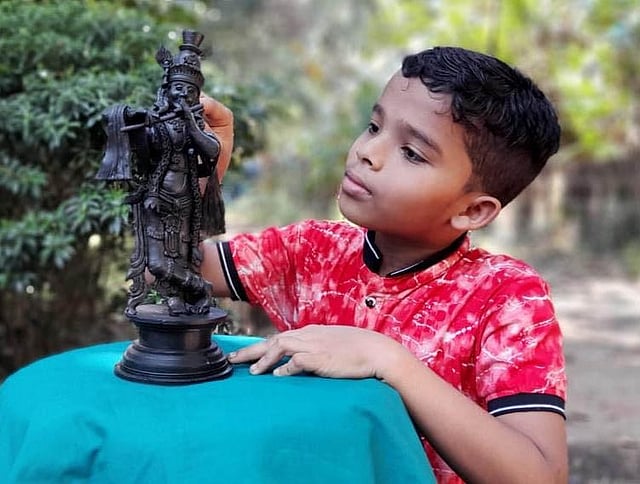

Suryanand T V is only in class V but his dexterous fingers effortlessly mould and carve the black wax to make two peafowls perched on a tree. He is in the process of making a bell metal sculpture using a technique unique to the Moosari community of Kunhimangalam, 10km from Payyannur a. “He does not know it is a 900-year-old art. He picked it up seeing our work in the backyard foundry,” says Suryanand’s father Rajendran T V, 42, a master craftsman and artist of bell metal.

Rajendran, who has studied only up to Class X, is pleased with his son’s progress. Not only does the boy make bell metal sculptures but also makes instructional videos in English. “We want more people to learn this art so that it survives,” says Rajendran, recipient of the 2020’s Kshethra Kala Akademi’s award for the best bronze sculptor.
In 2018, the state government declared the bell-metal sculpting of the Moosari community as a heritage art and their settlement in Kunhimangalam as a heritage village.But only 11 persons in Kunhimangalam are now making bell-metal figurines, sculptures, and lamps, he says. Of the 11, five are Rajendran and his four elder brothers -- Raveendran, Muraleedharan, Babu, and Rajeevan. According to legend, the community shifted base from Palazhi in Nileshwar to Kunhimangalam to make idols and temple accessories for the Sree Veerachamundeswary temple centuries ago. Over the years, members of the community moved to other professions.
Recently, the Mooshari community started a trust to teach youngsters the art of making Kunhimangalam-style bronze sculptures, lamps, and vessels. “No one came forward to learn,” says Babu T K, who did post-graduation but joined the family business.
Muraleedharan’s son Mithun T K, a fine arts student, is blending what he learnt in college with his family’s knowledge. “He recently got an order from an Indonesian temple. These are signs that this art and technique will survive,” says Babu. He says people from his community stopped making sculptures not because of lack of orders or money but it involved meticulous and long hours of work. Now the handmade products of Kunhimangalam are sought not just by temples but also by high net-worth individuals, corporate houses and hotels.
One of the specialties of Kunhimangalam is lamps with intricate work incorporating stories from mythologies.Rajendran is also making a Ramayana lamp for a Dubai-based client. He had earlier made a similar Dasavatara lamp, depicting the 10 avatars of Lord Vishnu. The artist’s knowledge of mythologies will be reflected in their creations. “These lamps are intricate works but made in a single casting. Each die can be used only once and so each of our products is unique,” Rajendran says. People now rarely order brass and bronze utensils for their houses but do place orders for showpieces and idols and temple accessories. Kunhimangalam makes at least 33 different types of lamps.

How it is made
The artists first make the model in black wax and then coat them with fine sand paste. On top of it, two or three layers of rough sand paste are coated. The model will have a vent at the bottom to drain out the wax and another vent at the top to pour the hot alloy. Once the die is set, it is slowly heated to drain out the wax. The die is then heated to suck out the air trapped inside. Simultaneously, the bronze (an alloy of copper and tin) is melted and poured into the die, explained the young Suryanand.